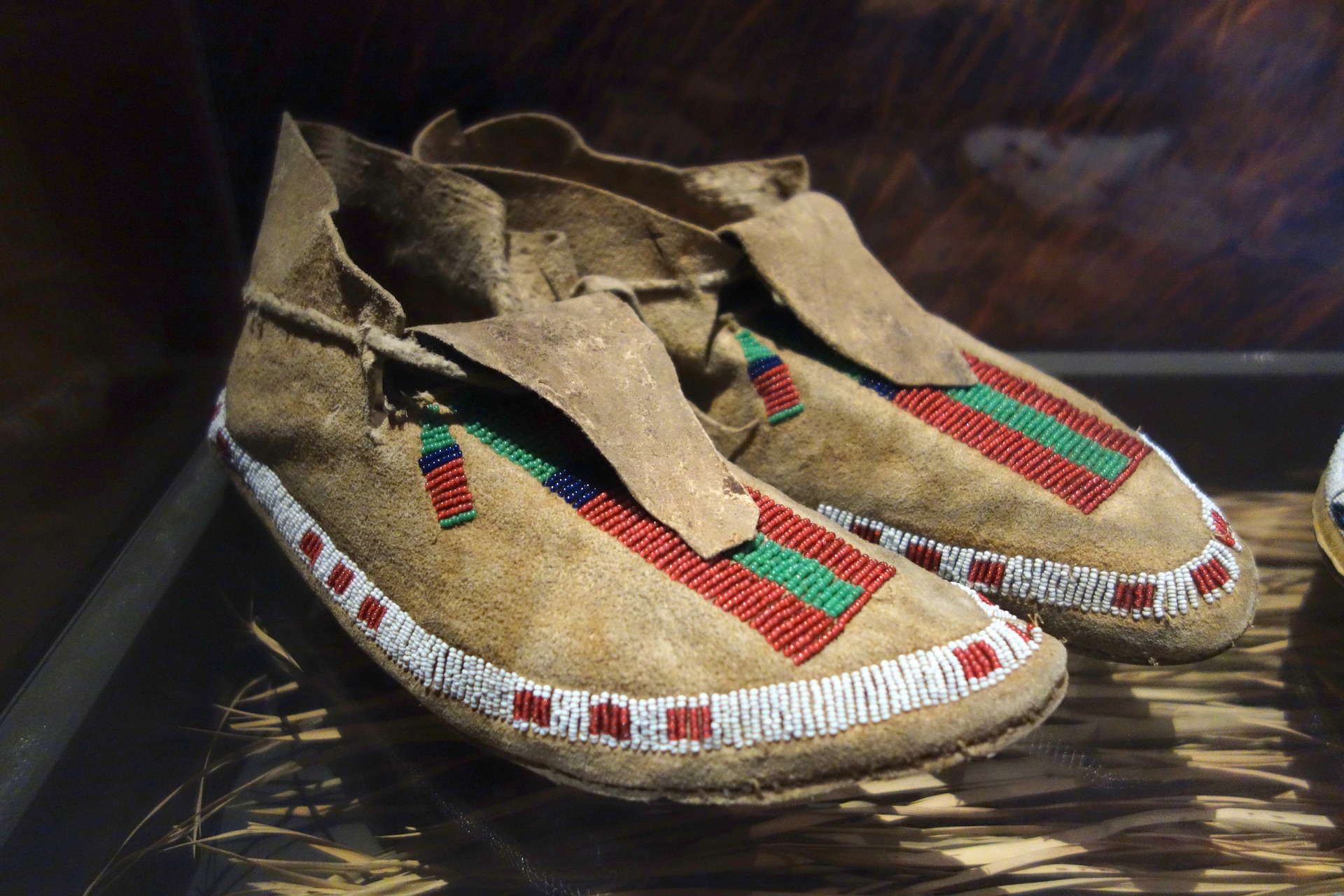The holidays commenceth, and who wouldn’t want a pair of beaded dangle earrings or a quillwork cuff to give as a memorable gift? It will make you the cooler aunt while the rest of your family trades wool socks and gift cards.
But with basic mall retailers like Forever 21 selling knockoff Native beadwork, and racist boutiques like The Spunky Sq**w appropriating Native style (they do NOT get a link), it’s important to shop smart and support Native communities with those holiday dollars.
Why does it matter? Lots of unimaginative retailers regurgitate the styles of other cultures. But when an American company sells a Kawaii style plush doll manufactured in Bangladesh, it isn’t hurting Japan (although it’s not doing Bangladesh any favors). Japan isn’t a threatened and oppressed culture. So undercutting them by faking Kawaii style, while dubious and lame, doesn’t contribute to genocide. Can’t say the same for faking Native American culture, which harms endangered communities.
Culture That Can’t Be Faked
In the States, it’s illegal to misrepresent arts and jewelry as Native unless it is authentically Native-made, thanks to the Indian Arts and Crafts Act (IACA) which passed in 1935. Anything appearing to be Native that is not Native-made must be permanently marked with the country that manufactured it.
Last year a New Mexico Native American art dealer called Al Zuni, the “largest wholesaler of Indian jewelry serving the Southwest since 1977,” was revealed to be fake through the most extensive ever federal investigation into fraudulent Indian artwork. The investigation involved 18 search warrants, turning up $35 million of fake Indian jewelry imported from the Philippines. The penalty for this federal crime can include jail time and fines up to a quarter million dollars.
A group of Mayan weavers in Guatemala have had enough of culture vultures ripping off their heirloom designs to mass produce low quality fakes. They introduced a bill to protect their textile creations as intellectual property, and started Ethical Fashion Guatemala, where you can buy direct from the communities. They remind consumers to be wary of labels that say ‘Ethically Sourced,’ ‘Sustainable Fashion,’ ‘Direct from Artisans,’ or ‘Ethical Fashion Brand.’ These phrases, they say, “should be red flags!”
The Navajo Nation last year took Urban Outfitters to court for using their name to sell hipster panties and flasks. Urban Outfitters so routinely makes headlines for their cringy blunders and unethical artist ripoffs it’s hard to imagine anyone even wanting to be seen within eyeshot of one of their stores, but hey, it takes all kinds of people to make the world go round.
Where to Go When You Know
Now you know the importance of buying excellent, mega gorge Native artworks directly from the hands of the Native people who make them. Where do you find them? Here are some ideas:
Go to a Powwow
Find a powwow in your area. Powwows are fun! They’re free. They’re family friendly. There will be lots of Native vendors. Try not to gawk. You don’t have to smile so much. Just relax. Try the frybread. Buy some beadwork. Enjoy the dancers and chuckle at the emcee’s dad jokes.
Or a Community Market
There are usually lots of popup community markets around this time of year. Keep your eye out for those that showcase people of color, minority groups, or even Native Americans specifically. This is a great way to make connections with Native people in your own community.
Or Just Shop Online
Powwows and markets give you the chance to say hey to the artisans themselves. It’s always more fun to make a small connection and get to know your craftsperson. But if you can’t do that, or if you’re one of the 79 percent of Americans who would just rather shop online, we got you covered. Here are some Native artisans hawking their wares on the interwebs. This is, of course, just the tip of the iceberg.
Beadwork and Jewelry
Elias Not Afraid
Featured in Vogue, Not Afraid mixes traditional work with street and punk aesthetics for accessories like spiked beaded cuffs. He takes orders by direct message on Instagram.
Antelope Woman Designs
Lenise Omeasoo, a self taught beadworker from the Sampson Cree Nation, uses bold colors and eye-catching designs for fancy riffs on traditional techniques. Orders by DM as well.
Savage Rose Designs
Earrings to make a statement. Melanie Parsons is not messing around. She is, however, offering gift certificates for the holiday season.
Charlene Holy Bear
Holy Bear beaded a pair of checkered Vans for a powwow and people lost their minds, so now she makes them for everyone.
ShinliNiintaih
The name means “strong hands,” and the jewelry, made by artisan Elaine Alexie, is Inspired by old Teetł’it Gwich’in designs which use a lot of dentalium shells and caribou hide.
Dean Couchie
Classic thunderbird medallions, bear claw bracelets, bolo ties and more from Dean Couchie of the Nipissing First Nation. He also takes custom orders.
artfromabove
Justin Rivard crafts gold and silver rings, pendants, bracelets, collars and more, combining plains motifs from his Cree heritage with those of the Pacific Northwest First Nations around where he lives.
Moccasins
JamieGentryDesigns
Handmade mocs in a variety of styles (pucker toe, wrapped, fringed, beaded, embossed) and materials (moosehide, bison, cork) straight from Jamie Gentry of the Kwakwaka’wakw Nation.
Streetwear
Urban Native Era
Bay Area apparel for the young and the rezless, with shirts, hats, and a ‘Skoden’ beanie that seems to sell out instantly whenever they make a new batch.
Rebelina
Beaded sunglasses by Métis artisan Candace Halcro, which featured in ELLE France and Bust Magazine, among others. Each piece is one of a kind, and custom orders are welcome.
Native Threads
Old school NDN tshirts with a rez attitude.
High Fashion
B. Yellowtail
Bethany Yellowtail, of the Apsaalooke, Tsetsehestahese & So’taeo’o nations, founded the B. Yellowtail collective to support Native designers in Los Angeles. Her brand has blown up lately for its blending of indigenous textiles with contemporary fashion.
Jamie Okuma
Featured in Vogue and Teen Vogue, the Luiseño and Shoshone Bannock designer also has pieces in the Smithsonian’s permanent collection. Couture fashion, wearable art and accessories, and high-rise hand-beaded boots are her thing.
Native Fashions are For Everyone
Some non-Native customers get concerned that wearing Native fashions might be appropriative. But if you’re buying Native direct, there’s nothing to worry about. Natives generally won’t sell anything that’s ceremonial or culturally sensitive. So enjoy your bag, your mocs or your dangle beads, or give them as gifts with confidence. You can be proud of them knowing you bought them from the source.




